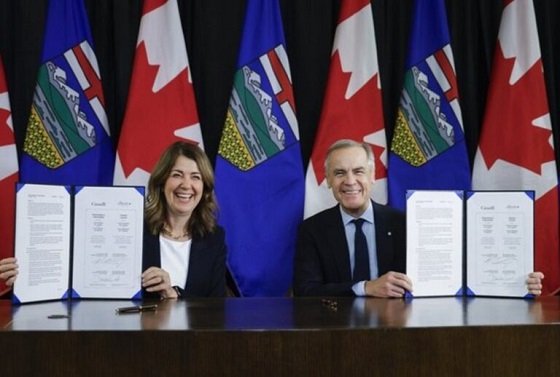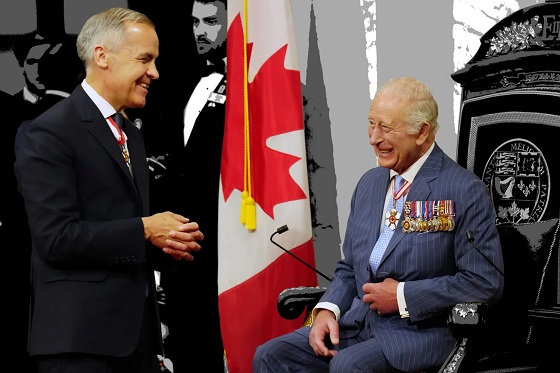Opinion
The race is on. What a relief to know that no candidate wants to increase crime, waste or taxes.

Wow what a relief, I was worried that a candidate in the next election was running to increase crime, waste and taxes.
Apparently they are all concerned about the current issue of crime.
I understand that our Crime Severity Index is the second highest in Canada, second only to Grande Prairie and it has hit main street media. But what about the root causes of these crimes?
Why is our severity index so much higher than Lethbridge? Is Grande Prairie’s so high due to isolation issues and high unemployment. Does Lethbridge have a more diversified economic base and not so oilfield dependent as Grande Prairie and Red Deer?
Lethbridge has invested heavily in recreational facilities and attracting young people, would following in those steps lower our crime index?
Isolation issues. Red Deer has maintained an unequal distribution of schools and recreational facilities in a north/south matrix.
North of the river where 30% of the population lives they have just the 1 recreational facility, the Dawe Centre, initially constructed in the 1970s and there are no plans to build another.
While south of the river there are 10 recreational facilities ; the Downtown Recreation Centre, Michener Aquatic Centre, Downtown Arena, Centrium complex, Collicutt Recreation Centre, Pidherney Curling Centre, Kinex Arena, Kinsmen Community Arenas, Red Deer Curling Centre, and the under-construction Gary W. Harris Centre.
The city is also planning on replacing the downtown recreation centre with an expanded 50m pool, in the $100 million range.
This may not seem related but 60% of facilty users use the Collicutt Center which is in the south east corner of the city. A person or family living in the north west may not have the time or can afford the long commute across the city. Isolation from peers is indeed an issue.
Schools. There are no high schools north of the river, now and there are no plans for any high schools to be built, north of the river. There are 4 high schools now, south of the river, and 2 more in planning for the south side of the river with 5 high schools along 30 Ave. Teenagers need to commute to their high schools for classes, sports and other extra-curricular activities. Often times it is too long a commute for those living north of the river to attempt to return home for supper then back to the school for activities with their peers. Isolation from their peers and idle hands need to be addressed.
I would be interested in hearing any candidate talk about why our city’s population is declining while the province grew, Blackfalds grew, Penhold grew, and Sylvan Lake grew. The city lost 975 residents, 777 from north of the river while Blackfalds grew by 700 residents. Would it be because they built the Abbey recreation centre away from their downtown and is expecting a new high school to start being constructed in 2018. Penhold grew and would it be because of their new recreation centre and secondary school? Will any candidate talk about this?
Over the campaign period I will offer my thoughts and ask questions. Issues cannot be addressed only in isolation. I look at crime not only in punitive measures but in preventive measures. The discussion may seem disjointed but in each way contribute to increased crime. Any parent can tell you what would happen if only some of your children can do something or go somewhere with their friends. Just widen the scope.
Bruce Dowbiggin
In Contentious Canada Reality Is Still Six Degrees Of Hockey

There’s an observation that only two things bind modern Canada. The federal equalization scheme and hockey, The past year illustrated that equalization is on tenuous ground with talk of separation in Quebec, Alberta and Saskatchewan.
Hockey, conversely, drew the nation closer at the moment that Donald Trump read the riot act to Canada’s elites. After the mens junior squad bombed out of the Junior Hockey championships for a second straight year, a new crisis emerged. To cover their purging of Justin Trudeau and insertion of Mark Carney as PM. the notorious Mike Myers’ Elbows Up homage to Gordie Howe’s elbows was appropriated by the Liberals (In true Woke wonk fashion, Howe never carried his elbows in Carney’s crash position. He kept them by his sides for greater power.)
In February’s Four Nations Cup, played at the height of tension between the two nations, Americans launched a Shoresy brawl in the first game, won easily by Team USA 3-1. As we wrote at the time, “Despite public calls for mutual respect, the sustained booing of the American national anthem and the Team Canada invocation by MMA legend Georges St. Pierre was answered by the Tkachuck brothers, Matthew and Brady, with a series of fights in the first nine seconds of the game.
Three fights to be exact when former Canuck J.T. Miller squared up with Brandon Hagel. (All three U.S. players have either played on or now play for Canadian NHL teams.) Premeditated and nasty. To say nothing of the vicious mugging of Canada’s legend Sidney Crosby behind the U.S. net moments later by Charlie McEvoy.”
Perhaps the least-appreciated aspect of the tension was the booing of the Star Spangled Banner by Canadians who have many Americans playing in their nation’s NHL squads. Leftist Toronto Star scribbler Bruce Arthur, bristled, “You’re damn right Canadians should boo the anthem.”
But in the rematch for the tournament title Canada reversed the tables, winning 3-2 in OT. The rush of nationalistic pride— from people who just weeks before were at each other’s throats over Indigenous claims and pipelines—fed a demographic topsy-turvy that swung Liberals 20 points in the polls, defeating the stunned Conservatives and coming within a few seats of a majority under Carney. Such was the hockey-fed insanity that NDP voters abandoned their far-left mantras to vote for a man who’d only weeks prior was a director of international giant Brookfield Investments.

One other byproduct of the Four Nations was the defrocking of Canadian legend Wayne Gretzky, who’d made a public show of his support for Trumping the 2024 presidential election. He was coldly rebuffed as he shook hands with the Canadian players before the Final game. It was not the finish for Gretz. He was reviled for golfing with The Donald in November, and then mocked for his faceplant appearance at the FIFA 2026 World Cup men’s draw. We wrote, “Gretzy apparently thinks there are countries called “North Mack-a-donia” and “Cur-ack-ow.” Other stabs at geography were almost as tortured.
Bitter Canadians could put up with him sucking up to Trump (he was mentioned as being in the crowd at the DC Xmas tree lighting) but failing geography is unforgivable. The week that started with Gretzky in a photo golfing at POTUS’s Jupiter, Florida, golf course was ending with him pummelled for his abuse of nations with different-sounding names. The Wayne Gretzky Center For Kids Who Want To Talk Good. “

In between the Gretzky episodes, two men who’d shaped modern hockey passed away. In September, on the anniversary of his participation in the 1972 Canada/ USSR series, Ken Dryden died at age 78. “For a generation that watched him develop he was likely the quintessential modern Canadian. Son of a charitable community figure. Educated in the Ivy League. Obtained his law degree. Served as a federal cabinet minister. Author of several definitive hockey books (The Game is perhaps the best sports non-fiction in the English language). Executive of the Toronto Maple Leafs. And more.
“He was on the American telecast of the 1980 U.S. Miracle On Ice at Lake Placid. And the radio broadcast of the 1976 Canada Cup. Ubiquitous media source. Loyal to Canada. And crucially, a son, husband, father and grandfather. If you’d created a model for the citizen of Canada of his times it was Ken.”
A less-loved figure in hockey— but no less significant— died the week after Dryden with the passing of former NHL Players Association director Bob Goodenow, who led the union through three momentous labour fights. Our take: “Tenacious, fearless and bold describes his style. Cuddly and sentimental he was not. The former lawyer and player agent for Brett Hull was not impressed by NHL self-dealing, and he said so. The Harvard product made a bad enemy after he succeeded Alan Eagleson in 1992.

“Today’s players owe him so much for finally giving them self respect. While players in other leagues ate steak, NHL players ate KD. Our book on the topic Money Players is an exhaustive catalogue of dirty dealing and deceit.
“Goodenow convinced hockey players that to earn their worth in the market they had to stick together in negotiations. It would be trying as fans and the media took the owners’ line under new commissioner Gary Bettman when they locked out players in 1994. He didn’t suffer reporters who were NHL echo chambers or old-timers who pined for their good old days of making $1000 a year.
CBA negotiations have never been the same. Player salaries have never been the same. Media covering hockey has never been the same. Eagleson was criminally convicted in the U.S. and Canada for the self dealing revealed by Conway and us. That’s an impressive legacy. RIP the man who reformed pro hockey from within.”
In a hangover story stretching back seven years, the sexual assault trial of the World Junior Hockey gold medalists of 2018 was a field day for narratives in the media and the courtroom. The facts, meanwhile, were stowed away beneath the surface of social media. As we reported in our June 28 column: “Outside diligent reporters such as Katie Strang of The Athletic and Rick Westhead of TSN, the media universe simply assumed guilt in the five players, because. hockey… Social media liberally smeared them as rapists, symbols of women’s degradation.

The five players on trial had been unfairly branded as criminals by Hockey Canada which rushed to condemn them in a quick civil settlement of EM’s charges. HC never consulted them about their side of the story before surrendering the cash. In the end, Ontario Justice Maria Carroccia found EM not “credible or reliable” enough to send the players to jail. While scolding their behaviour she declared the young men not guilty. It was a courageous decision, knowing it would prompt backlash. The Globe&Mail led the charge, declaring “After the Hockey Canada verdict Advocates fear survivors will fall silent”.
As 2026 dawns the outlook for Canadian NHL teams looks bleak. Just two teams would make the postseason today— Edmonton and Montreal— while Toronto, Ottawa, Winnipeg, Calgary and Vancouver wallow below the cut line. Which leaves the Elbows Up crowd pining for a replay of the Four Nations as Canada heads to the Olympic tournament. Don’t expect Wayne Gretzky to ride to their rescue.
Bruce Dowbiggin @dowbboy is the editor of Not The Public Broadcaster A two-time winner of the Gemini Award as Canada’s top television sports broadcaster, his 2025 book Deal With It: The Trades That Stunned The NHL And Changed Hockey is now available on Amazon. Inexact Science: The Six Most Compelling Draft Years In NHL History, his previous book with his son Evan, was voted the seventh-best professional hockey book of all time by bookauthority.org . His new poetry collection In Other Words is available via brucedowbigginbooks.ca and on Kindle books at https://www.amazon.ca/dp/1069802700
Business
DOOR TO DOOR: Feds descend on Minneapolis day cares tied to massive fraud

Federal agents are now going “DOOR TO DOOR” in Minneapolis, launching what the Department of Homeland Security itself describes as an on-the-ground sweep of businesses and day-care centers tied to Minnesota’s exploding fraud scandal — a case that has already burned through at least $1 billion in taxpayer money and is rapidly closing in on Democrat Gov. Tim Walz and his administration.
ICE agents, working under the umbrella of the Department of Homeland Security, fanned out across the city this week, showing up unannounced at locations suspected of billing state and federal programs for services that never existed. One day-care worker told reporters Monday that masked agents arrived at her facility, demanded paperwork, and questioned staff about operations and enrollment.
“DHS is on the ground in Minneapolis, going DOOR TO DOOR at suspected fraud sites,” the agency posted on X. “The American people deserve answers on how their taxpayer money is being used and ARRESTS when abuse is found.”
DHS is on the ground in Minneapolis, going DOOR TO DOOR at suspected fraud sites.
The American people deserve answers on how their taxpayer money is being used and ARRESTS when abuse is found. Under the leadership of @Sec_Noem, DHS is working to deliver results. pic.twitter.com/7XtRflv36b
— Homeland Security (@DHSgov) December 29, 2025
Authorities say the confirmed fraud already totals roughly $300 million tied to fake food programs, $220 million linked to bogus autism services, and more than $300 million charged for housing assistance that never reached the people it was meant to help. Investigators from the FBI, Justice Department, and Department of Labor have now expanded their probes after a viral investigation exposed taxpayer-funded day cares that received more than $1 million each while allegedly serving few — or zero — children.
One of the most glaring examples, the Minneapolis-based Quality “Learing” Center — infamous for its misspelled sign — suddenly appeared busy Monday as national media arrived. Locals told reporters the center is typically empty and often looks permanently closed, despite receiving about $1.9 million in public funds. State inspection records show the facility has racked up 95 violations since 2019. Employees allegedly cursed at reporters while children were bused in during posted afternoon hours.
DHS officials say the “DOOR TO DOOR” operation is deliberate. In videos released online, agents are seen questioning nearby business owners about whether adjacent buildings ever had foot traffic, whether they appeared open, and whether operators used subcontractors or outside partners to pad billing. DHS Secretary Kristi Noem posted footage of agents pressing workers about business relationships and transportation services used by suspected fraud sites.
“This is a large-scale investigation,” DHS Assistant Secretary Tricia McLaughlin told the New York Post, confirming that Homeland Security Investigations and ICE are targeting fraudulent day-care and health-care centers as well as related financial schemes.
FBI Director Kash Patel warned that what investigators have uncovered so far is “just the tip of a very large iceberg.” He pointed to the bureau’s dismantling of a $250 million COVID-era food-aid scam tied to the Feeding Our Future network, a case that resulted in 78 indictments and 57 convictions. Patel has also made clear that denaturalization and deportation remain on the table for convicted fraudsters where the law allows.
Dozens of arrests have already been made across the broader scheme, many involving Somali immigrants, though federal officials stress the investigation targets criminal behavior — not communities. Some local residents say the scandal is hurting law-abiding families. One Somali Uber driver told reporters he works 16-hour days and is furious that “some people are taking advantage of the system,” making the entire community look bad.
Now, with federal agents going “DOOR TO DOOR” across Minneapolis, the era of polite indifference appears to be over. The message from Washington is blunt: the money trail is being followed, the paperwork is being checked, and the days of treating taxpayer-funded programs like an open vault are coming to an end.
-

 International2 days ago
International2 days agoGeorgia county admits illegally certifying 315k ballots in 2020 presidential election
-

 Energy2 days ago
Energy2 days ago‘The electric story is over’
-

 Energy2 days ago
Energy2 days agoThe Top News Stories That Shaped Canadian Energy in 2025 and Will Continue to Shape Canadian Energy in 2026
-

 Daily Caller1 day ago
Daily Caller1 day agoUS Halts Construction of Five Offshore Wind Projects Due To National Security
-

 Alberta1 day ago
Alberta1 day agoAlberta Next Panel calls for less Ottawa—and it could pay off
-

 Daily Caller1 day ago
Daily Caller1 day agoWhile Western Nations Cling to Energy Transition, Pragmatic Nations Produce Energy and Wealth
-

 Fraser Institute2 days ago
Fraser Institute2 days agoCarney government sowing seeds for corruption in Ottawa
-

 Bruce Dowbiggin1 day ago
Bruce Dowbiggin1 day agoBe Careful What You Wish For In 2026: Mark Carney With A Majority





